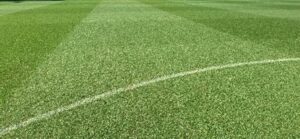Grass Seed for the Changing UK Climate
The UK experiences diverse climatic conditions throughout the year, characterised by unpredictability. Recent climate trends have witnessed extreme weather events, including prolonged droughts and heavy rainfall. Compounded by stringent chemical regulations and a diminishing product market, golf courses across the UK are confronting a surge in diseases and abiotic stresses, resulting in heightened disease vulnerabilities throughout the year. Such challenges amplify the need for effective turfgrass strategies. With an emphasis on increasing the genetic diversity of the turfgrass sward, this will be paramount in future turf management to build a resilient sward that can withstand these changes.
Predictions on the UK Climate
The Met Office’s in-depth analysis reveals that the UK’s climate is set for significant changes by the mid-21st century (Met,2023).
- Temperature: Winter months could rise between 0.70°C and 4.2°C. During summer, temperatures might increase from 0.9°C to 5.4°C, with the hottest days seeing a rise between 3.7°C and 6.8°C.
- Heatwaves: The frequency of heatwaves might quadruple, occurring on average four times a year
- Rainfall Patterns: Winter rainfall is expected to increase by 35%, while summer rainfall could decrease by up to 47%. This transition indicates milder, wetter winters and drier summers. The intensity of extreme hourly rainfalls could increase by 25%. Winter rain will be characterised by intense frontal events, while summer will have brief, high-intensity rainfalls.
Drawing from comparative analysis, Bastin et al. (2019) suggests that with the shifting climate patterns by mid-century, London could experience a climate reminiscent of contemporary Barcelona.
These projections underscore the urgent need for an adaptive, forward-thinking mindset towards overseeding and seeding strategies. With this in mind, many independent platforms of data are available to you, the turfgrass manager, to gain further insight into the adaptability and the characteristics of species and cultivars evaluated in many different geographic locations across the globe. Obtaining performance information from locations similar to your geographic location is essential when selecting new species and cultivars for introduction into the turfgrass sward.
Independent Variety Trialling of Turfgrass Species
BSPB Turfgrass Seed Trials
BSPB stands for British Society of Plant Breeders is the best source of independent data on Turfgrass performance for the UK market. It is conducted at the STRI in Bingley, which provides data for various playing surfaces listed below. However, there are limitations: the site is challenging, the dataset of a single location, and no disease data in the trials.
Lawns, Summer Sports Trial (Mown at 10-15mm)
Winter Sports Trial (Mown at 25mm)
Turfgrass List
GEVES combines data on species and cultivars from 12 European sites (including BSPB, UK). This data is particularly relevant for southern regions of the UK. The database includes diseases (not commonly seen at Bingley) such as Drechslera leaf spot and Microdochium. However, brown patch and GLS are not prevalent enough for data.
https://www.turfgrass-list.org/
Scan Turf Trials
Scan Turf trials provide a different perspective on species and cultivar selection. This is more representative of the Nordic regions. However, they provide data from their southern testing regions for golf green situations and winter sportsturf trials. That gives reference to the winter hardiness, diseases such as Microdochium and red thread and the relative growth rates of cultivars.
NTEP (National Turfgrass Evaluation Program)
NTEP is the largest dataset of grass species and cultivars tested, which encompasses a vast range of temperate locations across the USA. The trials are typically conducted for four to five consecutive years.
With this in mind, selecting the best seed house is paramount. Barenbrug aims to breed and develop innovative seed cultivars and grass seed mixes that respond to customers’ needs and a changing climate. Barenbrug is at the forefront of investing in first-class, forward-thinking R&D, which is conducted within Barenbrug and working collaboratively with external partners and independent research institutes along with drawing insights and feedback from customers to test products for the UK market, that gives turf managers confidence in different genetic varieties of grass species produce different traits, which sufficiently improve the qualities of the turfgrass sward. And consequently, its performance in the changing UK environment.
Joe Hendy, Technical & Seed Product Manager, ‘Barenbrug provides AGS with UK-leading innovative grass seed products that provide the groundsman and greenkeeper with exemplary playing surfaces all year round. Backed by substantial internal and external research and development, that all aims to give you a sustainable turfgrass species for the future’. To gain a better-nuanced perspective towards seed selection, contact the technical representatives from Barenbrug and AGS.
A glance at Barenbrug’s product portfolio
Bentgrass
All Bent 100% browntop bentgrass, which combines Charles with Barking superior Microdochium tolerance in recent trials and features the stand-out #1 variety, Charles browntop rated #1 BSPB 2023 giving superior performance, turf quality and density whilst out-competing Poa annua.
L-93 XD, XD stands for ‘Extra Disease Tolerance’. Utilises an outstanding new variety of creeping bentgrass L-93XD, which comes to the UK market after impressive NTEP trial data 15-19 report from the USA. Being #1 for Dollar Spot, #2 for Anthracnose Tolerance, and #1 for Turf Quality. If you combine Barking with its characteristic high tolerance to Microdochium (UK Trail). It gives the mixture unparalleled multi-pathogen disease tolerances, performance, and playability.
Blends of bentgrass species add genetic diversity, increase performance, give tolerances to diseases that occur within the turfgrass sward out-compete Poa annua and offer another option for the toolbox of the greenskeeper.
SGT (Sustainable Grass Technology)
SGT Range aims to support turfgrass professionals with the changing UK climate. With independent and in-house trials dedicated to research across multiple European sites, including STRI. Trials were conducted for reduced fertiliser, biomass, and fungicide requirements, along with drought tolerance of species and cultivars. With the promise of stress-tolerant grasses for sustainable turf management in the UK, two mixtures were formulated after years of research: SGT Fine Fescue & SGT Rye Fairway.
Hard Fescue is known for its bunch type of growth habit. The species has exceptional environmental benefits. Due to its low fertiliser and water requirements, planting hard fescue can have positive environmental impacts, such as drought tolerance, conserving water and nutrients, and disease tolerances against red thread and dollar spot.
With the 2018 and 2022 heatwave still fresh in the minds of the greenskeeper, hard fescue are going to become significantly prominent in turfgrass swards, and their resilience to climate in the future Beacon & Hardtop can be found in the SGT range mixtures.
Perennial ryegrass has long been misunderstood as broad-leaved and needing vast amounts of nitrogen to sustain growth. This couldn’t be further from the truth. Central to mixture SGT Rye Fairway is a fairly new perennial ryegrass Barprium is a highly ranked BSPB fine-leafed cultivar that has shown remarkable performance under stress conditions as well as exhibiting nitrogen efficiency in a recent trial at the STRI requiring 50% less nitrogen and only seeing a reduction of 4% Live Grass Coverage over an 18-month trial (Barenbrug, 2023).
Ultrafine
The range Ultrafine offers stand-out cultivars from both ryegrass species and fescue. However, Ultrafine 100 stands out in delivering unmatched performance regarding perennial ryegrass under close mowing conditions, making it particularly suitable for greens, tees, fairways and surrounds.
The Barolympic cultivar of ryegrass is notably superior for summer sports applications. And leads the BSPB Lawns trial with a score of 7.8. Additionally, its high tolerance to red thread, evidenced by a score of 6.1, underscores the cultivar’s exceptional nutrient efficiency.
On the other hand, Barprium has been given a score of 7.5 in Table L1. Independent studies have attested to this cultivar’s resilience to drought, efficient nitrogen utilisation, and disease resistance.
Barsignum holds the seventh position in both Table L1, with a mean score of 7.6.
Elite Sport
For the winter sports environment, Elite Sport mixture is the UK’s number-ranked mixture score with a score of 7.83, with Barzico holding the number one spot with a score of 8.1. It is also important to understand that this mixture is developed using a mixture of early and late heading ryegrass varieties for winter sports pitches, particularly for football. This can provide several benefits due to the synergistic effect of the cultivar’s different characteristics.
Prolonged growth period: Mixing early and late heading ryegrass varieties ensures that there is grass actively growing throughout more of the season. Early-heading varieties initiate growth and provide coverage earlier in the season while late-heading ones maintain growth later into the season.
Improved Wear Tolerance: Early and late heading varieties might have different wear tolerance attributes. For example, some early-heading varieties could be resilient to early-season use, while late-heading varieties might provide better resistance to wear as the season progresses.
Disease Resistance: Different ryegrass varieties might be resistant to different diseases. By incorporating both early and late heading varieties, you reduce the risk of the entire pitch being susceptible to a single disease.
References
Barenbrug (2023) ‘Barprium’ N efficiency study https://www.barenbrug.co.uk/sport/products/golf/sgt-rye-fairway.htm
Bastin et al. (2019) Understanding climate change from a global analysis of city analogues
https://journals.plos.org/plosone/article/file?id=10.1371/journal.pone.0217592&type=printable
Met Office (2023) Climate change in the UK https://www.metoffice.gov.uk/weather/climate-change/climate-change-in-the-uk#:~:text=Compared%20to%20our%20climate%20in,and%206%C2%B0C%20warmer






